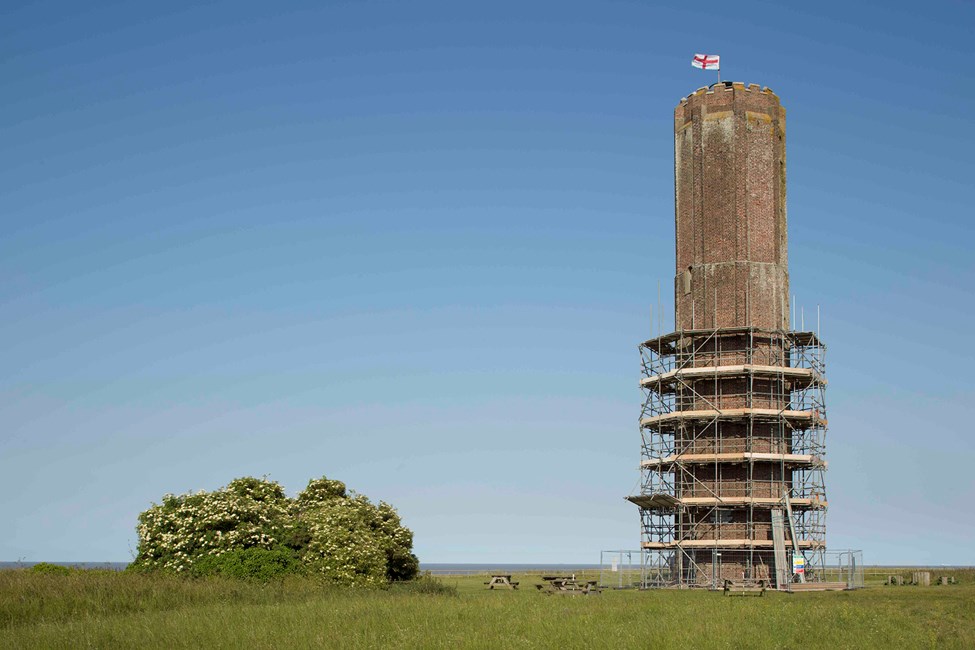- A Napoleonic watch tower in Essex, a lighthouse in Sunderland, a 20th century concrete church in Birmingham and the remains of a First World War munitions factory in Northamptonshire, are among England’s heritage now at risk in the latest report out this morning from Historic England.
For the first time, Historic England (formerly known as English Heritage), has compared all types of heritage on its Register to find out the types of heritage that appear the most; from domestic buildings, to protected wrecks, archaeological ruins to industrial sites and places of worship.
Barrows, the ancient burial mounds that cover the length and breadth of the country, are the most at-risk making up 15.6% of the Register (853). Nationally, much is being done to improve their fate.
The most common threat to barrows is farming through growing crops and ploughing the land they sit in. Overgrown plants and shrubs and animal burrowing can also cause problems.
Since 2014, 150 barrows have been rescued and taken off the Register. Historic England has done this through working with owners, in particular Natural England, to find ways of restoring these ancient sites.
Settlements, small concentrations of dwellings such as deserted medieval villages, are the third most common type on the Register (6.4% 352).
Historic England has also compared types of heritage across each region and found a different category is most at risk in each part of the country. Each category tells the story of that place, for example commercial sites – from shops, showrooms, marketplaces, warehouses to guildhalls – are the most commonly at risk in the North West, hinting at the region’s rich mercantile and industrial past.
The South East’s coastal defence sites, once the last defence from invasion, are on the Register more than any other type of heritage.
Castles are the sites that come up most on the West Midlands Register, reflecting a time when the England/Wales border was a less peaceful place.
London’s most frequently at risk sites are commemorative monuments, a nod towards the capital’s role in public life.
Among those added to this year’s register are
- Naze Tower, Essex, grade II* – a lookout post during both the Napoleonic and First World Wars, and used as a Radar station during the Second World War
- Hidden in bushes to the side of the M40 the National Filling Factory in Northamptonshire, originally built to fill shells with high explosive and by 1918 converted to produce poison gas
- Church of St Thomas More, Birmingham, grade II – a 1968 Roman Catholic church built entirely from concrete, by nationally-important architect Richard Gilbert Scott
- The White Lion in Wandsworth, grade II – a sprawling Victorian pub that was a live music venue in late 70s and 80s. Punk bands played there regularly including ‘X Ray Spex’
- The Mausoleum of Joseph Hudson, grade II – one of Kensal Green cemeteries’ most ornate tombs, Joseph Hudson fought in one of the decisive naval battles of the Napoleonic war with France
- Old Pier lighthouse, Roker, Sunderland, grade II* – built around 1856 and used until 1903. It was moved in 1983 to a nearby park
Duncan Wilson, Historic England Chief Executive, said: “This year’s Register gives us the most complete assessment of the state of our nation’s heritage yet. It shows that we are making progress, but also that the challenge is still significant. We are committed to working with local authorities, civic societies and everyone who is passionate about and values our heritage across England. The very things that make our regions special, are the things most at risk. If they’re lost, then a sense of that region is lost too. Together we can safeguard our most precious places and buildings for future generations.”
Among the sites taken off the register are
- Cardington Airship Sheds, Bedfordshire, grade II* – built nearly 100 years ago, Shed No.1 is the only pre-1918 hanger to survive in Europe. Measuring 20,000 square metres and 50 meters high, it was on the first ever Heritage at Risk Register in 1998
- The Scenic Railway, at Dreamland, Margate, grade II* – Britain’s oldest surviving roller coaster, badly damaged by fire in 2008, it’s now one of the star attractions at the newly-opened amusement park
- Brown Bear Pit and kiosk, Dudley Zoo, grade II* – built 1935-7 by architects Lubetkin and Tecton, the Bear Pit is one of 27 innovative and daring structures in the zoo using reinforced concrete
In Manchester, the home of Victorian novelist, Elizabeth Gaskell, has been brought back to life following a lengthy local campaign and has come off the register.







